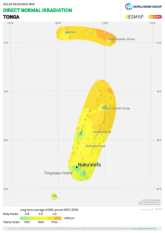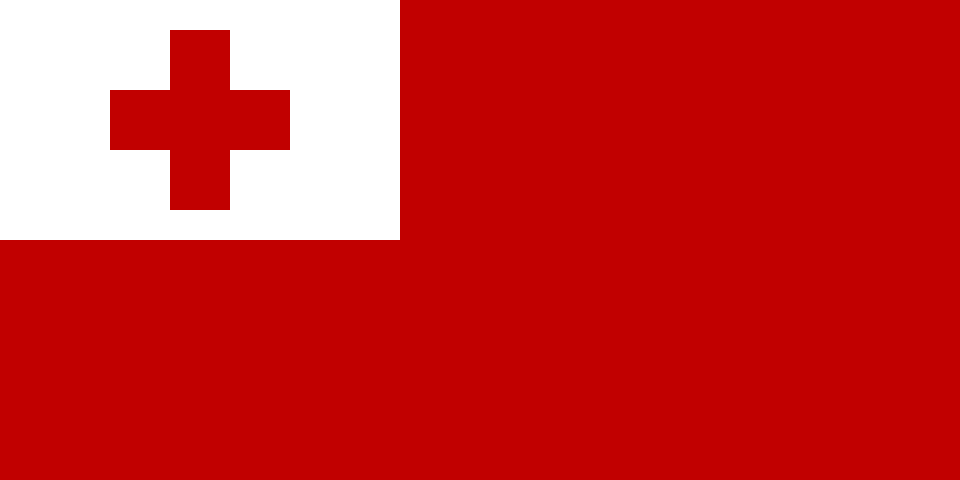Tonga Military Power Ranking 2025
MPR Rank: 183rd
MPR SCORE: 137
MPR Index: 0.0132 (1.0000 is perfect)
Reverse MPR Index: 0.9352 (0.0000 is perfect)
Z Score: -0.824 (standard deviations above the mean)
Overview
Tonga ranks 183rd in the 2025 Military Power Rankings. As a small Polynesian kingdom, Tonga maintains a modest, multipurpose military force known as His Majesty’s Armed Forces (HMAF). The HMAF is responsible for internal security, maritime patrol, disaster response, and support to civil authorities, and it plays a role in regional and international peacekeeping operations. Although Tonga does not possess large-scale warfighting capabilities, it remains actively involved in security cooperation with Australia, New Zealand, and the United States.
Tonga’s strategic defense posture focuses on national resilience, Pacific cooperation, and military professionalism, reflecting its role as a small but respected contributor to regional stability in Oceania.
Military Strengths
Tonga’s strengths come from its specialized deployment role, international training partnerships, and operational readiness for humanitarian and peacekeeping tasks.
1. His Majesty’s Armed Forces (HMAF) Structure
HMAF consists of three components: the Land Force, the Maritime Force, and the Air Wing.
Force size is approximately 500–600 active personnel, with responsibilities spanning border security, royal protection, and logistics assistance.
2. Regional Peacekeeping and Coalition Deployments
Tongan troops have deployed to Iraq (with U.S. and British forces), Afghanistan, and regional peacekeeping operations under the Regional Assistance Mission to Solomon Islands (RAMSI).
The HMAF is known for its discipline and reliability in international missions, gaining high regard among its larger allies.
3. Maritime Patrol and EEZ Protection
Tonga maintains a coast guard-style naval unit, operating patrol boats provided by Australia to enforce its Exclusive Economic Zone (EEZ), combat illegal fishing, and support search and rescue (SAR).
4. Strong International Partnerships
Regular defense cooperation with New Zealand, Australia, and the U.S., including military training, equipment donations, and disaster response drills.
Participates in multinational exercises such as Exercise Talisman Sabre, Exercise RIMPAC, and Pacific Partnership.
Why Tonga Is Ranked 183rd
Small Force Size and Limited Combat Capability
The HMAF operates with light infantry weapons, basic armored vehicles, and patrol boats, but has no tanks, fighter aircraft, or long-range artillery.
No Strategic Deterrence Systems
Tonga has no missile systems, air defense network, or combat aviation, relying on allies for strategic coverage and external defense guarantees.
Limited Logistical and Sustainment Capacity
The country lacks a domestic defense industry, and much of its equipment, training, and maintenance comes through foreign military aid.
Non-Offensive Doctrine Focused on Sovereignty and Stability
HMAF doctrine is defensive and humanitarian-focused, oriented around internal deployment, regional cooperation, and monarchy protection.
Conclusion
Tonga operates a small but effective military force, built on discipline, regional engagement, and functional partnerships. While the His Majesty’s Armed Forces do not possess heavy warfighting capabilities, their contribution to peacekeeping, disaster response, and coalition missions enhances Tonga’s security role in the Pacific. Its MPR score reflects minimal conventional military strength, balanced by professionalism, strategic relationships, and operational relevance in regional security affairs.
Military Strength and Force Projection
Active Military Personnel: 500 (His Majesty’s Armed Forces)
Reserve Personnel: None
Paramilitary Forces: 300 (Police and Emergency Services)
Army Personnel: 300
Navy Personnel: 150
Air Force Personnel: 50
Ground Forces
Tonga's ground forces are small and mainly focused on internal security, disaster response, and participating in peacekeeping missions abroad.
Main Battle Tanks (MBTs): None
Armored Fighting Vehicles (AFVs): None
Artillery (Towed and Self-Propelled): None
Air Wing
Tonga operates a very limited air force, consisting of a small number of helicopters used for search and rescue operations, medical evacuations, and disaster relief.
Naval Forces
Tonga’s Navy is primarily tasked with patrolling its territorial waters, focusing on maritime law enforcement, counter-smuggling operations, and ensuring the security of its exclusive economic zone (EEZ).
Patrol Boats: 4
Missile Capabilities
Tonga does not possess missile systems or advanced weapons. Its defense strategy revolves around maintaining maritime security and responding to natural disasters.
Strategic Partnerships
Tonga relies heavily on defense partnerships with Australia, New Zealand, and the United States for training, equipment, and security assistance. It has participated in regional peacekeeping missions and works closely with regional organizations such as the Pacific Islands Forum to ensure regional stability.
Military History & Combat Experience
Tonga has a surprisingly active international military profile, especially for a state of its size, with operational deployments alongside major powers and regional coalitions.
Historical Legacy and Monarchical Tradition:
Tonga has maintained a hereditary monarchic military structure since the 19th century. While its forces have never been involved in a full-scale war, Tonga has preserved a military culture tied to royal service, honor, and loyalty to the crown.Peacekeeping and Stabilization Missions:
Tonga contributed troops to the Regional Assistance Mission to Solomon Islands (RAMSI) in the 2000s, gaining experience in urban security, civil-military coordination, and logistics support.Coalition Combat Deployments (Iraq and Afghanistan):
In partnership with the United States and United Kingdom, Tongan troops served in Iraq (2004–2008) and later Afghanistan, performing base security, logistics patrols, and force protection duties. Their performance earned international praise for professionalism.Disaster Response and Civil Operations:
HMAF is routinely involved in cyclone relief, infrastructure repair, and island evacuation during natural disasters, working with NGOs, UN agencies, and foreign naval forces.
Tonga’s armed forces may be small, but their operational footprint, coalition experience, and reputation for reliability give the country a level of strategic credibility far beyond its size or equipment stockpile.
General Information
Demographics and Geography
Population: ~105,000 (2024 est.)
Population Available for Military Service: ~45,000
Geographic Area: 747 km² (comprising 169 islands, 36 inhabited)
Land Boundaries: 0 km
Bordering Countries: None (island nation)
Coastline: 419 km
Climate: Tropical; warm season (December to May), cool season (May to December)
Terrain: Mostly flat coral islands and some volcanic islands with central uplands
Natural Resources: Fish, fertile soil, forests, offshore mineral potential
Proven Oil Reserves: None
Proven Natural Gas Reserves: None
Economic Indicators
Defense Budget (2025): ~$15 million USD
Defense Budget as % of GDP: ~1.6%
GDP (PPP): ~$1.1 billion USD
GDP per Capita (PPP): ~$10,400
External Debt: ~$400 million USD
Military Expenditure Trend (last 5 years): Slight increase, focused on maritime patrol and regional peacekeeping
Military Infrastructure and Readiness
Military Service Obligation: Voluntary
Primary Defense Focus: Internal security, maritime surveillance, disaster response, peacekeeping
Military Industry Base: None
Cyber/Electronic Warfare Capability: Minimal
Nuclear Warhead Inventory: None (non-nuclear state)
Major Military Districts / Commands: His Majesty’s Armed Forces (HMAF) divided into Land Force, Maritime Force, Air Wing, and Support Services
Missile Inventory Highlights: None; equipped with small arms and naval patrol weapons
Reservist Call-up Readiness / Timeline: Moderate; 30–60 days
Reservist Force Size: ~2,000
Space, Intelligence, and Strategic Infrastructure
Space or Satellite Programs: None
Military Satellite Inventory: None
Intelligence Infrastructure: HMAF Intelligence Branch under Ministry of Defense
Intelligence Sharing Partnerships: Australia, New Zealand, United States
Airports (Total): ~6
Major Military Airports: Fuaʻamotu International Airport (dual-use capability)
Naval Power and Maritime Logistics
Merchant Marine Fleet: Small
Major Ports: Nukuʻalofa
Naval Infrastructure: Operated by the Tonga Navy (Maritime Force), includes patrol boats and offshore surveillance
Naval Replenishment Capability: Basic coastal fueling and maintenance
Domestic Mobility and Infrastructure
Railway Network: None
Roadways: ~680 km
Energy and Fuel Logistics
Oil Production: None
Energy Imports: Fully dependent on imported refined fuels
Strategic Petroleum Reserves: Minimal
Defense Production and Strategic Forces
Domestic Defense Production: None
Military Installations (Domestic): Nukuʻalofa, Fuaʻamotu
Military Installations (Overseas): None
Foreign Military Personnel Presence: Australian and New Zealand training support
Defense Alliances: Bilateral defense cooperation with Australia, New Zealand, and the U.S.
Strategic Airlift Capability: Minimal; light fixed-wing and rotary aircraft for domestic use
Wartime Industrial Surge Capacity: Very low
Research and Industry Support
Defense R&D Investment: None
Key Wartime Industries Beyond Defense: Fisheries, inter-island logistics, emergency response services
Political and Administrative Structure
Capital: Nukuʻalofa
Founding Date: June 4, 1970 (independence from British protectorate status)
System of Government: Constitutional monarchy



